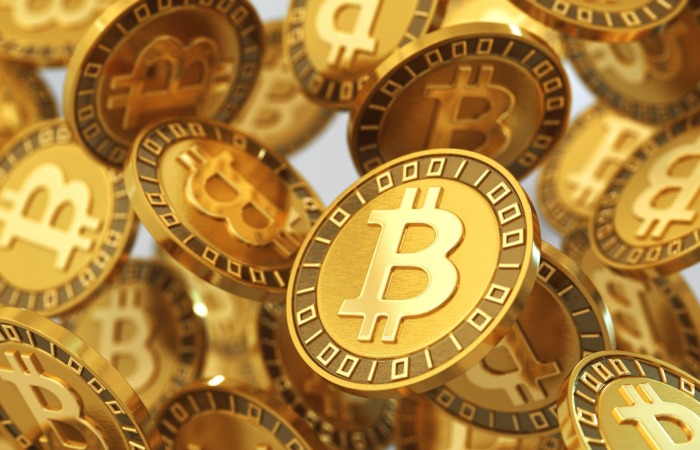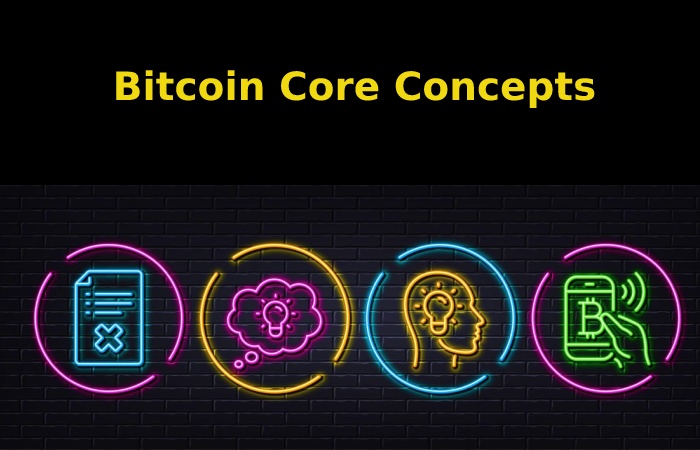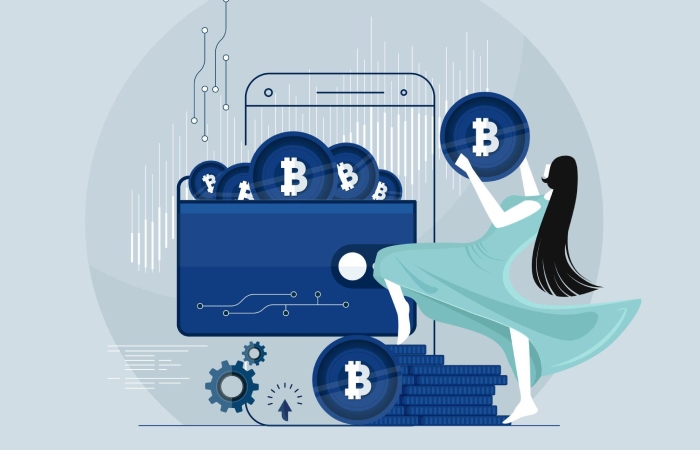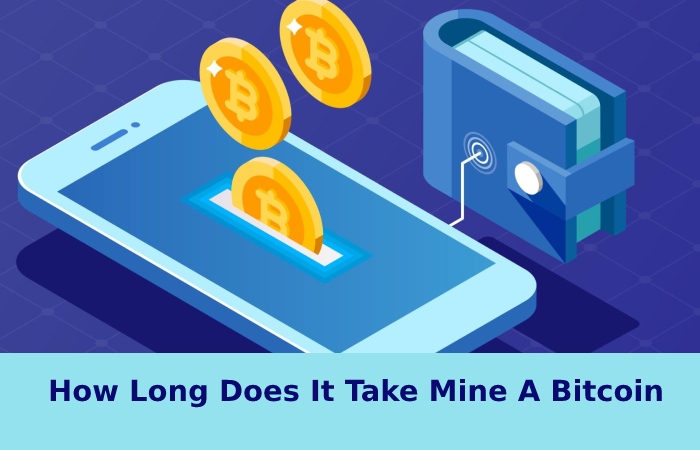In this article, our blog will discuss Bitcoin, who is the bitcoin created, and who made the first Bitcoin transaction. The well-known digital currency Bitcoin functions free of any central control or the oversight of banks or governments. As an alternative, it depends on peer-to-peer software and cryptography.
A public ledger and its copies record all Bitcoin dealings on servers worldwide. Anyone with a spare computer can set up one of these servers, known as a node. Consensus on who owns which coins is reaching cryptographically across these nodes rather than relying on a central source of trust like a bank.
What is Bitcoin?

Bitcoin is a form of digital currency that aims to eliminate the need for central authorities such as banks or governments. Instead, Bitcoin uses blockchain technology to support peer-to-peer transactions between users on a decentralized network. Hal Finney received ten bitcoins in January 2009 for mining block 70. In addition, Satoshi Nakamoto’s identity as the alleged architect of the Bitcoin network was made public for the first time.
“Bitcoin’s creation is a seminal point in human civilization. And it will accelerate the democratization of societies,” says Ajeet Khurana, a crypto project advisor and investor. Bitcoin is a decentralized currency, which means that any government or financial institution does not control it. Instead, it relies on a network of computers to verify transactions and maintain the integrity of the blockchain, which is the public ledger that contains all Bitcoin transactions. Transactions are genuine through Bitcoin’s proof-of-work consensus mechanism, which rewards cryptocurrency miners for validating transactions.
Bitcoin Core Concepts

Block.
A block of coins is dividable to eight decimal places, and a millibitcoin (mBTC) is 1/1000 of a Bitcoin. The smallest unit is a satoshi (sat), which is 1/100,000,000 of a Bitcoin.
Transaction
A computer ordered styled as “payer X sends Y Bitcoins to payer Z.”
Blockchain

Each transaction creates an unbroken link on the chain, and this transparent, public chain lets Bitcoin exist and be usable.
Mining
The Bitcoin network’s users use mining to ensure that new transactions are consistent with previously completed ones. In addition, mining works to verify transactions. It makes sure you can’t spend Bitcoin that you don’t own or that you’ve already paid for. Independent entities or groups complete intensive and costly computer calculations to generate a block.
Block hash
Mining activities include a record-keeping service that keeps the blockchain constant, complete, and unalterable. The hashes confirm available Bitcoin and serve as a means of uniformly pleasing the miners.
Blockchain address
An arrangement of 25 to 34 alphanumeric characters. The data is given to other parties so they know where to send the coins.
Wallet
Any specific individual or entity wishing to exchange Bitcoin must create a digital collection of the credentials, known as a wallet, necessary to transact coins.
Full clients

It is a wallet that includes a full copy of the entire blockchain. It is the safest form of storage, but it requires substantial digital space.
Lightweight clients
This wallet includes a more limited version of the blockchain, enabling it to be portable on devices such as smartphones.
Keys
The store credentials in the wallet are the two keys which are essential for each transaction in a safe-deposit box.
Public
It is the technology necessary to encrypt and decrypt transactions. It is “one way,” meaning that it simply unlocks transactions, but it is very difficult to reverse the transaction. This key enables the blockchain to be nonstop.
Private
It is the passcode that transacting parties initiate so that the transaction is unique to themselves. One must know the corresponding private key to spend Bitcoin and digitally sign the transaction, and the public key verifies the party’s signature without revealing the private key.
Who Is Bitcoin Created, And Where Did Bitcoins Come From

Bitcoin was created in 2008 by the mysterious Satoshi Nakamoto and released as open-source software in early 2009. The first Bitcoin transaction originated when Satoshi Nakamoto sent 10 Bitcoins to developer Hal Finney. Since then, Bitcoin and other cryptocurrencies have grown rapidly, with millions worldwide using them for everything from online purchases to remittances.
Thus, there has been a rising interest in Bitcoin and other cryptocurrencies, with many residents investing in them to diversify their portfolios and protect against inflation. One of the reasons that Bitcoin has become so popular is its scarcity. There will be only 21 million Bitcoins, meaning it is a finite resource that cannot be extravagant like traditional currencies. It has made it attractive to investors seeking a hedge against inflation and economic instability.
Another reason for Bitcoin’s popularity is its security. Because it is decentralized and relies on a network of computers to verify transactions, it is virtually impossible to hack or counterfeit. It makes it a more secure currency than traditional fiat currencies, which are vulnerable to fraud and counterfeiting.
Who Made The First Bitcoin Transaction

Our main moto is to discuss who is the bitcoin created, and who made the first Bitcoin transaction so to know in detail read the following article;
2009: First BTC Transaction
The first Bitcoin transaction occurred between Nakamoto and an early Bitcoin adopter in January 2009. In the afternoon of January 12, 2009, computer programmer Hal Finney received the world’s first Bitcoin mining reward (10 BTC) for mining block 70. He received the tokens from ‘Satoshi Nakamoto.’ Since then, it had widely taken risks that Satoshi created the Bitcoin blockchain network when he published Bitcoin’s whitepaper in 2008.
“As of today, Bitcoin has a market cap of over $872 billion and is emerging as a popular alternative asset class among people, financial institutions, and more,” says Nischal Shetty, CEO, WazirX.
2010: Pizza Sells For BTC
Bitcoin was still a novelty a year later, and only enthusiasts and computer geeks interacted with it. But a programmer paid 10,000 BTC for two Papa John’s Pizza; 10,000 BTC would be worth roughly $613 million today.
2011: Price Touches $1 For The First Time
On February 9, 2011, Bitcoin’s price reached $1, according to historical data from investing.com. That day’s trading volume was just 49,630, a minuscule figure compared to now. Moreover, this was when the whole crypto market reached a $10 million market capitalization.
How Long Does It Take Mine A Bitcoin

Bitcoin uses the Proof of Work consensus algorithm for its security. Like many other cryptocurrencies, a use of cryptocurrency miners network for them, making the whole process irreversible.
The block discovery process takes approximately 10 minutes per block. Resulting in mining a certain number of new bitcoins per block. Hence, which is currently set at 6.25 BTC/block but halves approximately every four years. It reduces the number of bitcoins mined with each newly discovered block.
How to get a Bitcoin
You can buy bitcoins online using a Bitcoin wallet and get them in person using websites such as CoinATMRadar and Liberty X. You can also play mobile or online games to earn bitcoins.
Is Bitcoin A Good Investment?

Whether or not Bitcoin is a good investment for you depends on your circumstances, but here are a few pros and cons to consider.
Bitcoin pros
- Quick speeds and cheap transactions. Once you have Bitcoin, you can send and receive money from anywhere at any time, cutting down on the time and potential cost of every transaction.
- Personal information, such as a name or credit card number, is not involved in transactions. Therefore, transactions are typically more private than other transactions, such as credit card transactions, even if linking a specific individual to a particular wallet is still feasible.
- Some investors are keen to adopt an alternative, decentralized currency after the financial crisis and the Great Recession; one that is basically independent of conventional banks, governing bodies, or other third parties.
- Growth potential. Some investors who purchase and keep the currency wager that as Bitcoin develops, greater acceptance and usage will follow, increasing its value.
Bitcoin cons
- Volatility of prices Although the price of Bitcoin has increased significantly over time, buyers’ outcomes have varied greatly based on the timing of their investments. For example, those who bought Bitcoin in 2017, when its price poured toward $20,000, had to wait until December 2020 to recoup their losses.
- Concerns about hacking There have been several high-profile thefts, despite supporters’ claims that the blockchain technology behind Bitcoin is even more secure than conventional electronic money transactions.
- Not protected by the SIPC. If a brokerage collapses or money is stolen, the Securities Investor Protection Corporation will protect investors up to $500,000, but this insurance does not cover bitcoin.
Conclusion
Hence, we have discuss who is the bitcoin created, and who made the first Bitcoin transaction. The rise of Bitcoin and other cryptocurrencies has significantly impacted cities. While some residents see them as a way to protect against inflation and participate in the digital economy, others are wary of the risks associates with decentralizing currencies. Regardless of your stance on cryptocurrency, one thing is clear: it has changed how we think about money and finance and its impact for years.
Related posts
Featured Posts
What Is A Web Project? – Phases For Planning, and More
Introduction Web Project The term ” web project ” can designate different development types, including technical creation, content management, data,…
10 Benefits of Eating Roasted Gram
In this article, we will talk about the 10 benefits of eating roasted gram. The roasted gram is also known…


